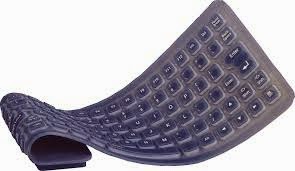Saturday, 19 July 2014
Cpu – central processing unit
Motherboard Components
lCPU and accompanying chip set
lROM BIOS
lRAM
lBuses and expansion slots
lComponents used to change hardware configuration settings
uJumpers
uDIP switches
Basic Components of a CPU
lInput/output (I/O) unit
lArithmetic logic unit(s) (ALU)
lControl unit
lProcessor core speed (measured in gigahertz)
lWord size and data path
lEfficiency/special functionality of
programming code
lSystem bus speeds the processor supports
lAmount of memory included with the CPU
(internal and external cache)
lType of RAM, motherboard, and chip set the
processor supports
lMultiprocessor ability
The Pentiums
lTwo ALUs (a true multiprocessor)
l64-bit external path size and two 32-bit
internal paths (one for each ALU)
lTerminology
uBus speed
uProcessor speed
uMultiplier
uMemory cache
HYPER-THREADING
Hyper-threading, officially Hyper-Threading Technology or HT Technology, abbreviated HTT or HT, is Intel's proprietary simultaneous multitasking (SMT) implementation used to improve parallelization of computations (doing multiple tasks at once) performed on x86 microprocessors. It first appeared in February 2002 on Xeon server processors and in November 2002 on Pentium 4 desktop CPUs.[1] Later, Intel included this technology in Itanium, Atom, and Core 'i' Series CPUs, among others.
Normally processor are different form factors based on the years
each processor core that is physically present, the operating system addresses two virtual or logical cores, and shares the workload between them when possible. The main function of hyper-threading is to decrease the number of dependent instructions on the pipeline. It takes advantage of superscalar architecture (multiple instructions operating on separate data in parallel). They appear to the OS as two processors, thus the OS can schedule two processes at once. In addition two or more processes can use the same resources. If resources for one process are not available, then another process can continue
Subscribe to:
Comments (Atom)



































